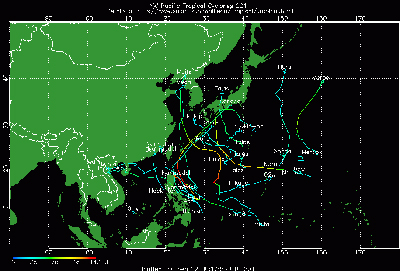
The amount of rainfall and number of tropical storms during the summer monsoon season greatly impact the agriculture, economy and people in Asia. Though meteorologists and climate scientists have worked for years to develop helpful prediction systems, seasonal predictions of these two types of weather phenomena are still poor.
Scientists Bin Wang, Baoqiang Xiang and June-Yi Lee from the International Pacific Research Center at the University of Hawaiʻi at Mānoa, have now made a promising breakthrough for predicting in spring both the summer monsoon rainfall over East Asia and the number of tropical storms affecting East Asian coastal areas. The study was published in the journal Proceedings of the National Academy of Sciences on January 21, 2013.
The scientists have shown that both the East Asian summer monsoon and the storm activity in the western North Pacific are controlled by fluctuations in the western Pacific Subtropical High (WPSH), a major atmospheric circulation system in the global subtropics centered over the Philippine Sea. When this system is strong in summer, then monsoon rainfall tends to be greater than normal over East Asia, and in the western North Pacific there tends to be fewer tropical storms that make landfall.
“Our findings create a promising way for predicting monsoon rainfall and tropical storm days during the East Asian summer,” concludes lead author Wang, a meteorology professor at the UH Mānoa. “As a first step, we use global general circulation models to predict the fluctuations in the WPSH, and then in a second step, we use this forecast to predict rainfall and storm days in regional analyses. We have done hindcasts from 1979 to 2009 using this approach and have found substantially improved skills over the use of dynamical climate models in predicting the East Asian summer monsoon rainfall and tropical storm activity.”
—Adapted from a UH Mānoa news release

